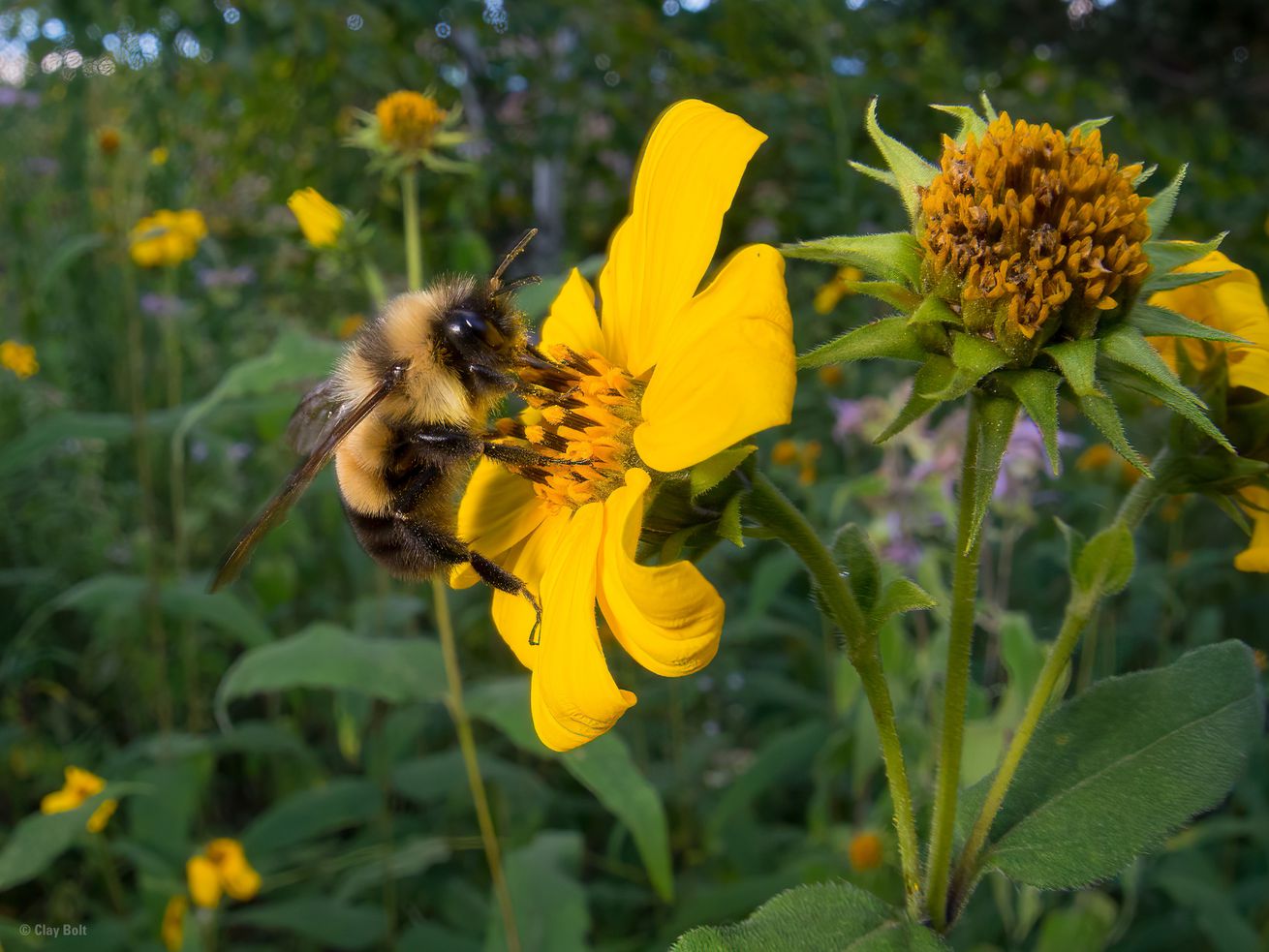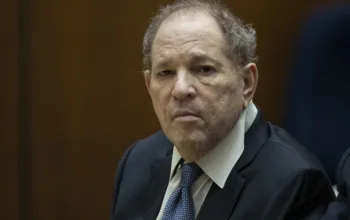To save more nature, think small.
Roughly an hour and a half northwest of Chicago is one of Illinois’s largest airports: Chicago Rockford International. It’s a major cargo hub that services UPS and Amazon and some commercial airlines. And it’s expanding rapidly as demand for shipping surges.
But in the summer of 2021, the expansion project hit a snag. In order to build a new road, airport officials planned to bulldoze part of a small native grassland, known as Bell Bowl Prairie, and environmental advocates launched a campaign to stop construction. They held rallies, filed a lawsuit, and drew national attention to this small plot of land.
Those tactics have worked, so far. The airport has voluntarily paused construction. And while it could resume any day now — and part of the prairie has already been cleared — local environmental groups have promised to do everything in their power to save what remains.
/cdn.vox-cdn.com/uploads/chorus_asset/file/24162184/DJI_0065.jpg)
Crawford, Murphy & Tilly
The fight over Bell Bowl might seem mostly symbolic on the surface, representing the battle between corporate power and nature, or a big fuss over something that’s ultimately very small. The prairie is about 15 acres, no larger than a few city blocks.
But this parcel of land — and others like it around the world — are irreplaceable, ecologists told Vox. While small bits of habitat tend to get overlooked, they are an essential component of any landscape and help sustain wildlife and human communities.
“These small habitat remnants are unique and should be preserved at all costs,” said Federico Riva, an ecologist at the University of Lausanne, who’s studied the value of small patches. “Small does not mean irrelevant, at all.”
So, if Bell Bowl symbolizes anything, it’s that tiny habitats, often hidden in plain sight, have unexpectedly large benefits, and they’re worth fighting for.
Bell Bowl Prairie is a gem, and there are many places like it
From the window of a plane, Bell Bowl Prairie doesn’t look like much. It’s not only small but a grassland, a type of habitat that’s easy to mistake as plain and uninteresting.
Yet when you take a closer look, the prairie comes to life. In the summer, it’s speckled with bright pinks and blues and yellows that buzz with insects and birds. Among its many treasures is the rusty patched bumble bee, a federally endangered species, and one of at least 100 bee species that likely use the prairie. (Native bees, which help pollinate crops and flowers, are in decline.)
/cdn.vox-cdn.com/uploads/chorus_asset/file/24163018/Screen_Shot_2022_11_02_at_2.58.55_PM.png)
Google Earth
/cdn.vox-cdn.com/uploads/chorus_asset/file/24162357/GettyImages_1238860324.jpg)
Brian Cassella/Chicago Tribune via Getty Images
Mainstream ecologists have, for many years, pushed the idea that bigger is better: To conserve plants and animals and avoid extinction, they say, protect large and unbroken expanses of land, like what you might find in a wildlife refuge or national park.
That thinking has made small chunks of habitat like Bell Bowl seem somewhat worthless in comparison. “Small, often isolated patches of vegetation are considered expendable, tradeable, of limited ecological value,” conservation scientists Brendan Wintle and Sarah Bekessy wrote a few years ago.
Protecting a huge swath of a rugged mountain landscape can certainly help protect wolves, grizzlies, and other creatures. But this strategy often neglects bees, small mammals, and plants that have evolved to live in the exact sorts of areas that humans have developed into farmland, or airports.
Research increasingly shows that even tiny habitats are teaming with life. In a review study published earlier this year, scientists counted more species across several small habitats compared to fewer large ones. In other words, small patches may have more species per area, on average, than large expanses of natural land.
“We assume to know what is small for nature, for a bee or a flower,” said Riva, who led the research. “But when you actually go and do the research, it often turns out that there is more biodiversity than we expect. It changed my vision. Instead of protecting just what is large, we could think about protecting as much as we can, regardless of how big it is.”
Tiny habitats are often the last vestiges of native land
Small patches are also valuable because of what’s around them: land that’s been irretrievably transformed. Illinois, for example, has lost all but one-hundredth of 1 percent of its native prairie. That means prairie-dependent species don’t have many other places to go.
This story repeats itself all over the world.
Along the Willamette River in Oregon, for example, small parcels of grassland are refuges for threatened birds like the streaked horned lark and the western meadowlark. Meanwhile, near Melbourne, Australia, small remains of grassland harbor rare species including native pollinators like blue-banded bees, said Wintle, an ecologist at the University of Melbourne. “If we lose those patches, not only have we lost a whole type of ecosystem, but we also lose those pollination services,” he told Vox. (Around one-third of food production in Australia depends on bee pollinators.)
Many patches are also extremely old. Bell Bowl Prairie, for example, has been around for at least 8,000 years. And in conservation, old is good.
Ecosystems can take a long time to mature to a point where they can support a wide variety of native species and resist external threats, such as invasive plants, said Elizabeth Borer, a grassland ecologist at the University of Minnesota.
That means you can’t recreate them overnight, and it makes them essential to restoration projects — efforts to bring back native ecosystems. In a region that’s lost most of its habitat, such as Illinois, old leftover patches can function like a bank, providing a source of species to plant. “The value for restoration is huge,” Borer said of small patches. “It’s like memory storage for that region.”
Tiny habitats, under threat
Small habitats tend to be extremely vulnerable because they’re near cities, suburbs, and farms — places where the original landscapes have already been chopped up. When an airport seeks to expand, for example, it might do so at the expense of prairie patches. “It tends to be the smaller patches of vegetation that go first,” Wintle and Bekessy wrote.
Part of the problem comes back to this false idea that bigger is better. It underlies conservation policy around the world. In places like Australia and Canada, for example, you can often legally raze small areas of native habitat without a permit or an environmental assessment. “Right now, all of these policies just assume that these small patches are worthless,” Riva said.
/cdn.vox-cdn.com/uploads/chorus_asset/file/24162349/Pulsatilla_nuttaliana_CC0_pamfromcalgary.jpeg)
pamfromcalgary/iNaturalist
In the US, meanwhile, there aren’t many laws that protect habitat at all, according to Bruce Stein, chief scientist at the National Wildlife Federation. American laws, such as the Endangered Species Act, are mostly set up around conserving individual species. So the preservation of a patch often depends on finding an endangered species residing in it.
That’s especially relevant for the future of Bell Bowl Prairie.
On August 8, 2021, a state biologist found the endangered rusty-patched bumblebee in the prairie, and for a time, it seemed like that might be enough to save Bell Bowl. Yet the Federal Aviation Administration, which oversees the airport, in consultation with the Fish and Wildlife Service, is still likely to green-light the road project, said Robbie Telfer, a campaigner with the local group Friends of Illinois Nature Preserves. That’s because the bee isn’t wholly dependent on the prairie, he said. It could live elsewhere.
Melissa Clark, a spokesperson for FWS, told Vox that the Service is reviewing the FAA’s assessment of how the road project may impact the bumblebee.
But, ultimately, it’s up to the FAA to decide. A spokesperson for the FAA said very little in response to a request for comment, other than to explain that it’s in consultation with FWS.
/cdn.vox-cdn.com/uploads/chorus_asset/file/24162080/274485654_10158911788491094_1853213488641658940_n.jpg)
Courtesy of Paul Goyette
Environmental advocates have tried for months to engage with the airport to find an alternative solution that would leave the prairie alone, Telfer said. They even worked with an engineering firm to provide recommendations for how to build the road around the prairie. But airport officials haven’t responded or shown a willingness to work together, Telfer said. Top airport officials did not respond to Vox’s request for comment.
“That’s obviously the most frustrating thing,” Telfer said. “There’s just been no collaboration, no sharing of information, but they are doing everything legal that they’re supposed to.”
In an ideal world, Telfer said, the state of Illinois would safeguard the prairie as a formal nature preserve. That would grant it permanent protection by state law. Any strategy to keep Bell Bowl intact would be a boon for native wildlife and the local community.
Even the smallest of grassy patches can improve human health. These are the green spaces that tend to be close to people, compared to, say, a large national park. That makes their benefits widely accessible. Trees cool neighborhoods, grasslands store huge amounts of carbon underground, and green spaces, in general, offer a suite of mental health benefits.
“People everywhere have these remnant habitats and you might not know that they’re there,” said Jillian Neece, an organizer at Friends of Illinois Nature Preserves. “Being able to locate them and fight for them is something that people all over the world can relate to.”
Author: Benji Jones
Read More



